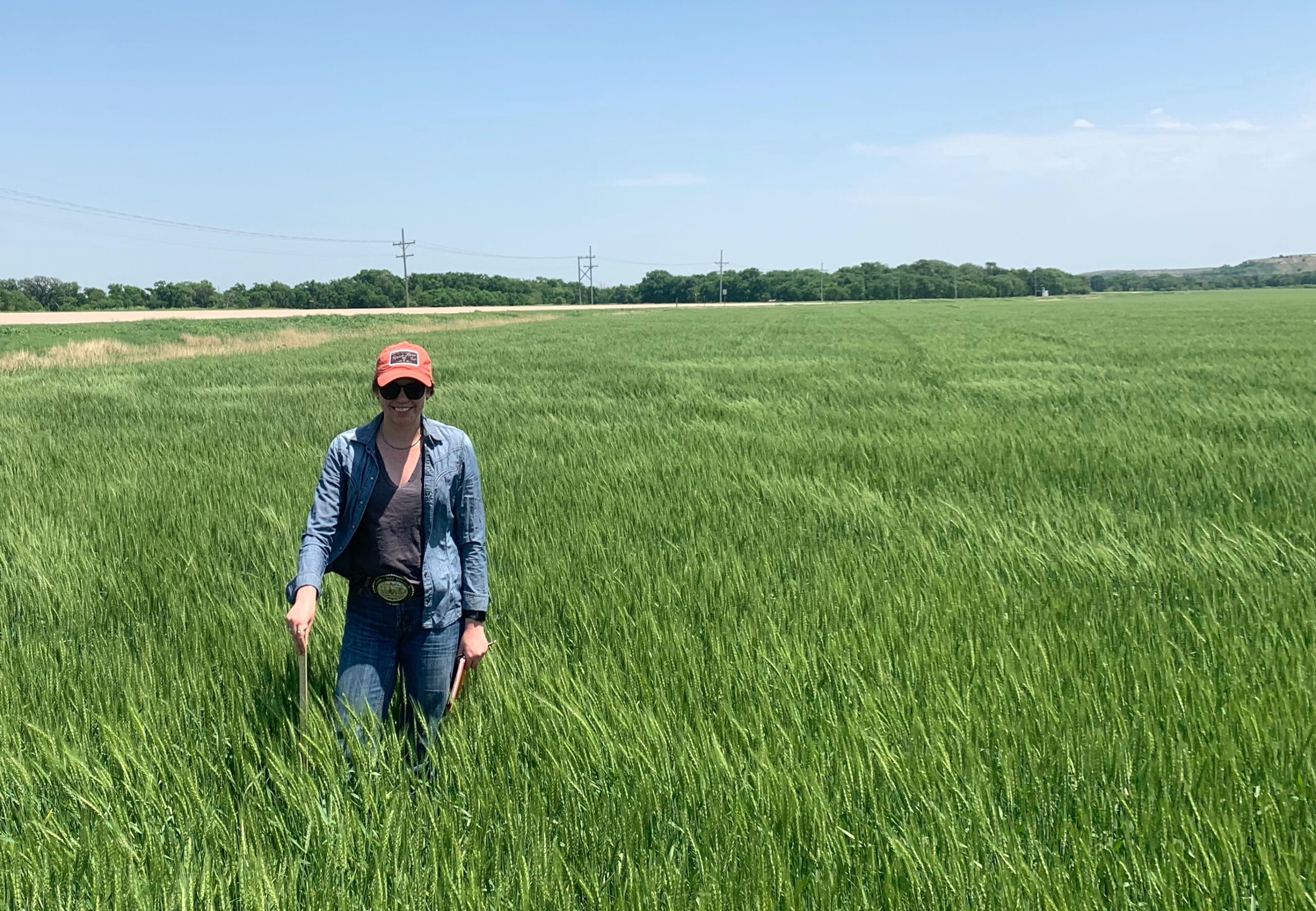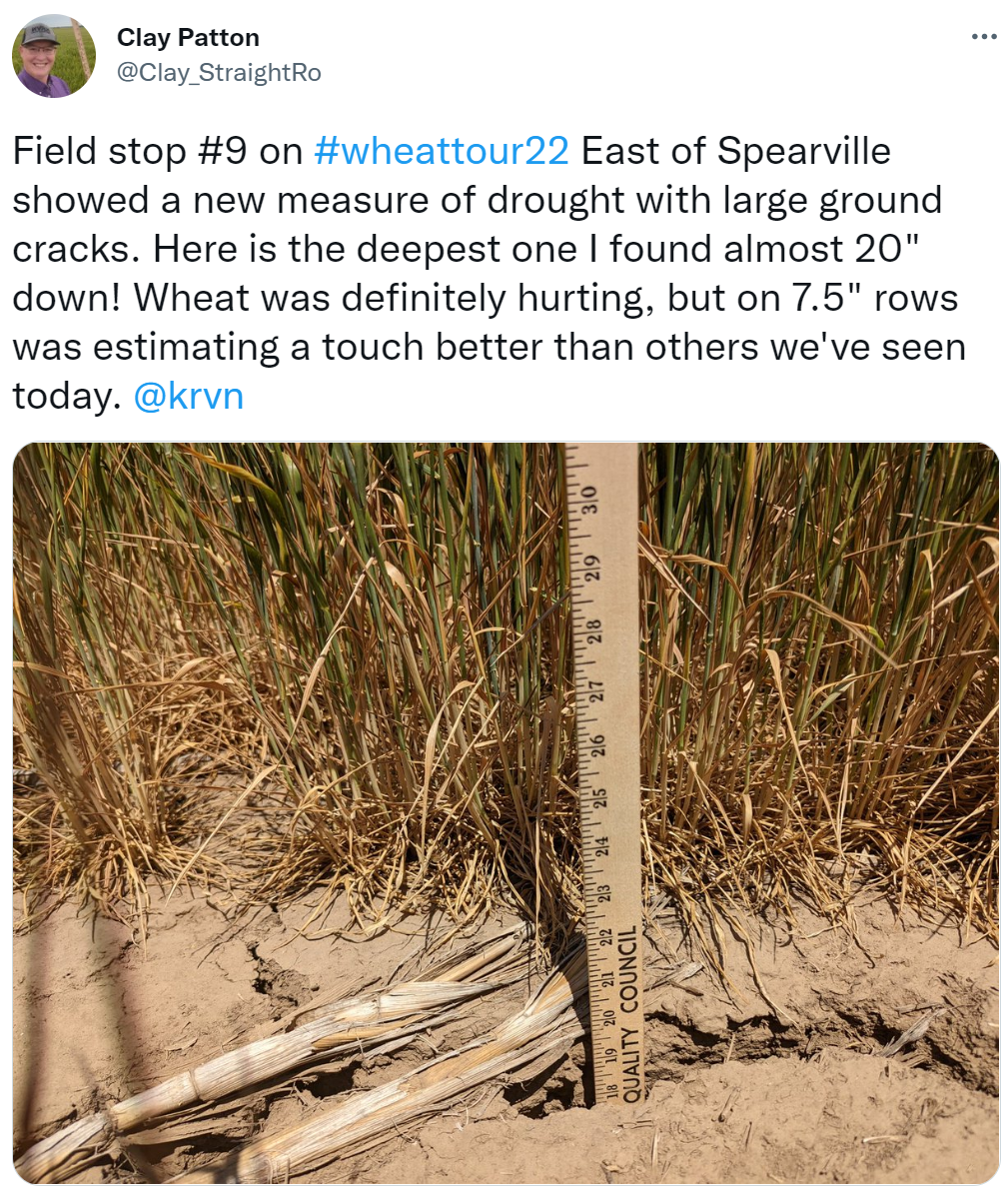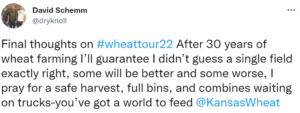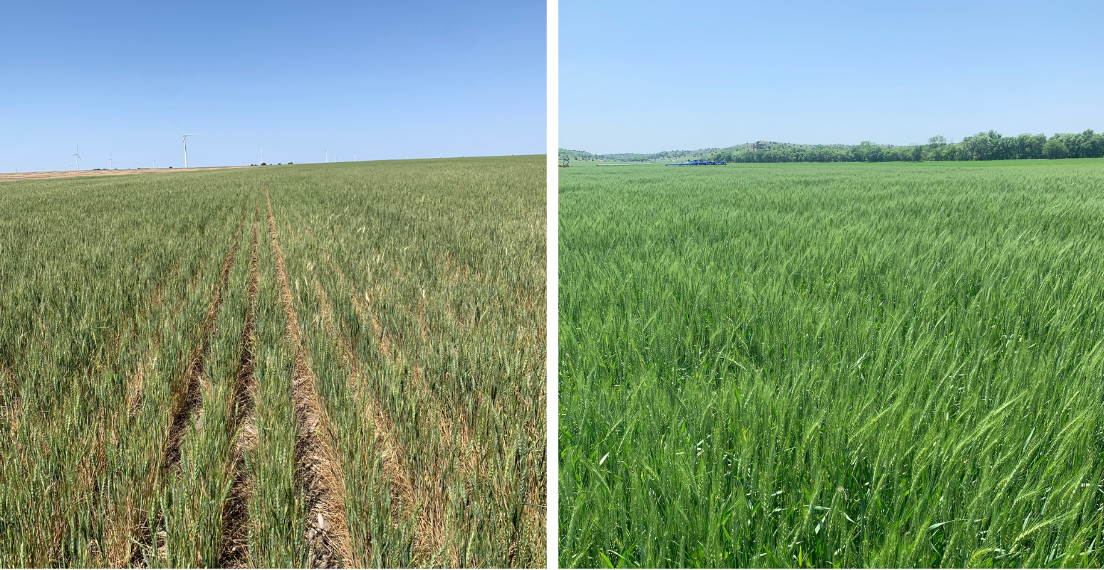The anxiously awaited Hard Winter Wheat Tour sponsored by the Wheat Quality Council that ended May 19, confirmed that persistent drought will cut the yield potential of the 2022 Kansas wheat crop to its lowest level since 2018. The 83 participants scouting the crop estimated the average yield potential at 39.7 bushels per acre (52.71 kilograms per hectoliter) compared to the average tour estimate of 47.4 bu/ac (62.66 kg/hl) between 2016 and 2021 (there was no tour in 2020).
Still, the hard red winter (HRW) and hard white (HW) crop potential is quite variable across Kansas. The photos taken by participants shared here show the wide range of crop conditions. Timely precipitation and cropping patterns made a significant difference, even in extremely dry southwestern Kansas. Jennifer Latzke, editor of Kansas Farmer magazine, reported this observation from the tour on May 18.
The tour participants also estimated total production from the scouted area at 261 million bushels. That is less than USDA’s most recent estimate of Kansas wheat production, even though the tour yield estimate was slightly higher than USDA’s estimate of 39.0 bu/ac.
Higher Abandonment
“The participants agreed that there will be more fields abandoned than USDA has estimated,” said U.S. Wheat Associates (USW) Market Analyst Michael Anderson. USW Assistant Director, West Coast Office, Tyllor Ledford, joined Anderson as tour scouts this year.

“Some fields have wheat plants that are so short, they likely will not be, or cannot be, harvested,” Anderson said. “The more experienced participants had a keen sense that making an insurance claim would be the best decision for those fields with questionable potential. I have to say, however, that during the tour, our group saw only isolated fields like that.”
Neighboring Crops Also Stressed
Kansas Wheat’s report from the last day of the tour included the following update on crop conditions in Nebraska, Colorado and Oklahoma.

The USDA estimate for the Nebraska wheat crop is 36.9 million bushels, down from 41.2 million in 2021. The estimated yield average is 41 bu/ac. USDA expects the Colorado crop at 49.6 million bushels, down from 69.6 million bushels last year. However, Colorado Wheat Executive Director Brad Erker estimated the state’s crop at 40.1 million bushels, based on a yield of 28.6 bu/ac, with a 30% abandonment rate. Oklahoma reported that the state’s production is estimated at 60 million bushels, down from 115 million bushels last year, with 25 bu/ac yield.
This Week’s Snapshot
The Wheat Quality Council (WQC) is a coordinated effort by breeders, producers and processors to improve wheat and flour quality. WQC executive director Dave Green said that this tour and a Hard Spring Wheat tour scheduled later this year are important to make connections within the wheat industry. He said another goal is to “describe the wheat as well as we can at the current point in time, not knowing what will happen over the next few weeks.”
Harvest is still more than three weeks away. Any potential rain, or lack of it, to come will affect final yields. In addition, even very thin fields may be harvested. As Kansas Farmer editor Latzke wrote: “At $13 per bushel, every bushel … counts.”
Domestic and overseas wheat buyers can continue to monitor 2021 progress for most U.S. wheat classes by subscribing to the USW Harvest Report posted on the website every Friday.




